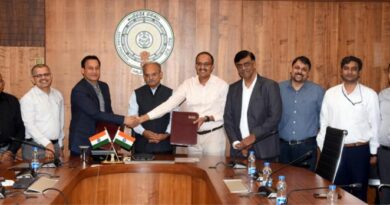Green Climate Fund approves US$43 million for Climate Resilience in India’s Coastal Communities

In an important step toward its goals for low-carbon, climate-resilient development, India got the approval of a US $43 million (Rs 315 Crore) grant from the Green Climate Fund. The project supported and executed by the UNDP will be aiming to support climate resilience of millions of people living in the coastal states of Andhra Pradesh, Maharashtra, and Odisha.
India’s coastline is expected to be among the regions most affected by climate change globally. The Bay of Bengal and the Arabian Sea are both predicted to be subject to extreme climate variability, with the frequency and intensity of cyclones and extreme weather events projected to increase, particularly on the eastern coastline.
This new project is an essential step for India in reaching its goals outlined in the Paris Agreement and 2030 Agenda for Sustainable Development, which calls on every nation to end poverty and hunger by 2030 and to take strong action to ensure no one is left behind in protecting vulnerable people from the extreme impacts of climate change.
“India’s coastal areas are quite vulnerable to climate change and this project focuses on selected vulnerable areas of Andhra Pradesh, Maharashtra and Odisha states. The new project, with GCF assistance, will not only help enhance resilience and adaptability, but also lead to emissions reduction while providing support to local communities for their livelihoods. It aligns well with the priorities of the National Action Plan on climate change, the State Action Plans, as well as the nationally determined contributions under the Paris Agreement,” said Ravi S. Prasad, Joint Secretary, Climate Change, Ministry of Environment, Forests & Climate Change, Government of India.
The project expects to impact the lives of close to 12 million people, with over 1.7 million people directly benefited from livelihoods support, and another 10 million indirectly benefiting from improved shoreline protection. The programme is also expected to have nearly 3.5 million tonnes of CO2 sequestered through restored ecosystems over the next 30 years.
The project will be led by the Ministry of Environment, Forest and Climate Change, with support from UNDP, the six-year project will work with communities in restoring ecosystems and promoting climate-resilient livelihood options, such as the sustainable farming of mud crabs. The government of India will finance an additional US $86.8 million (Rs 635 Crore) toward the new project to mainstream and accelerate the impacts of the Green Climate Fund grant.
“In addition to helping communities establish more climate-resilient livelihoods, this multi-dimensional project will contribute to global efforts to reduce greenhouse gas emissions – over 3.5 million tonnes of CO2 will be absorbed through restored ecosystems. It will also have considerable long-term environmental benefits including healthier ecosystems, better biodiversity conservation and improved buffering against climate change-driven extreme weather,” said Francine Pickup, Country Director at UNDP India.
A range of partners from the public sector, private sector, and civil society were consulted in the creation of the project proposal and will be involved throughout its implementation. The project is set to begin in early 2019 and run to the end of 2024.
images: Adaptation-UNDP




